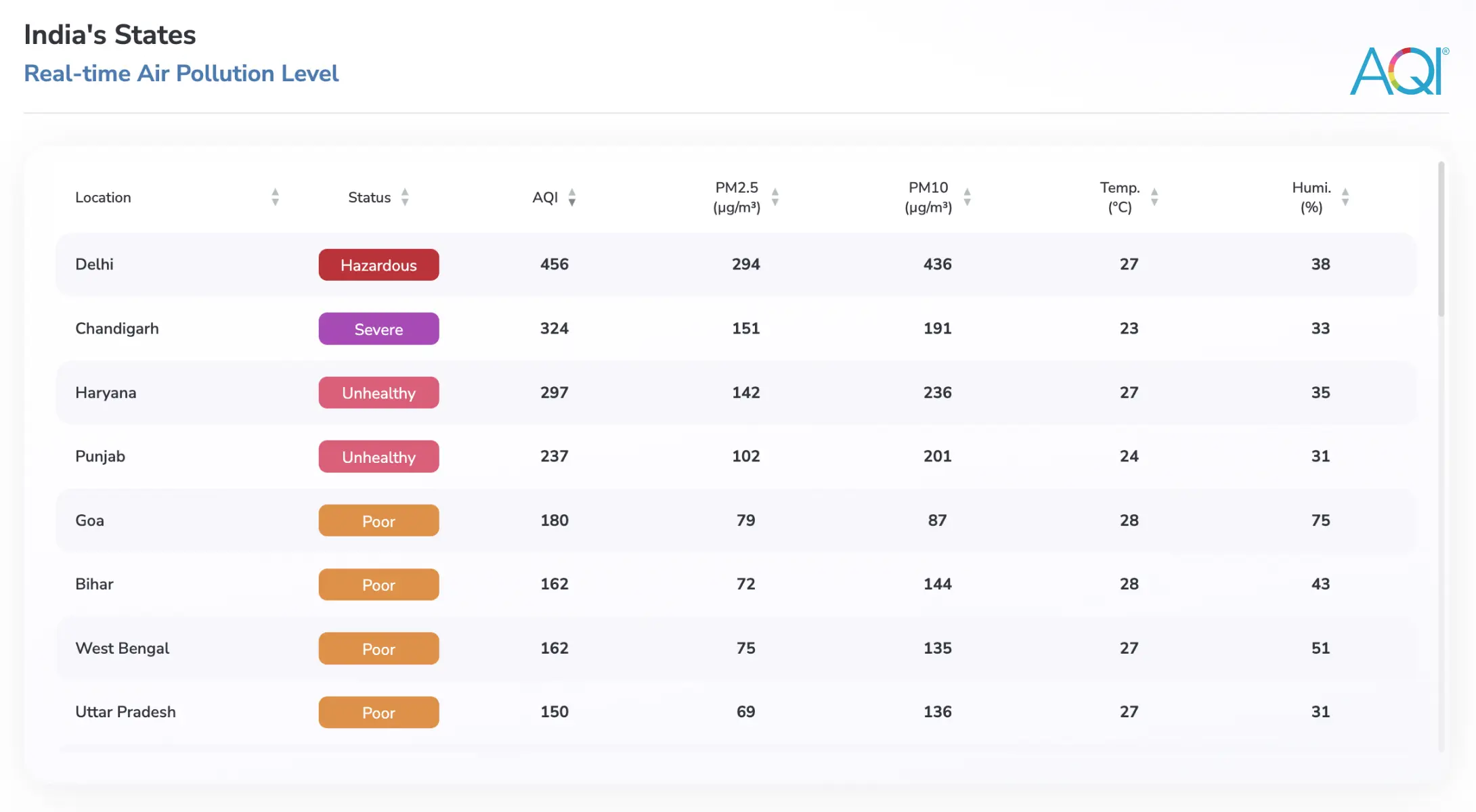Air pollution is not just limited to Delhi as air pollution in North India is becoming a crisis. Since, air pollution in Delhi NCR is continuously in the “Hazardous” category. But it is not just limited to Delhi now. Because air pollution is becoming North India’s condition. Winter has knocked on the door of North India as the temperature dips a little for welcoming winters. But high AQI levels also come as a gift with winter.
Not just Delhi, other Northern Indian cities also facing dense smog for 2 days. Today, Chandigarh AQI levels take over the Delhi air quality conditions. Moreover, AQI levels in other Northern locations are crossing the safe levels. Here know about the air pollution in North India as in Delhi NCR, Chandigarh, Punjab, Haryana and Uttar Pradesh.
What are the current conditions of air pollution in North India?

Delhi Air Quality:
For two continuous days, Delhi has seen the worst smog episodes in November. The AQI levels remained in the “Hazardous” category. Every location in Delhi has AQI in the “Severe” to “Hazardous” category. These levels are +30x times higher than the WHO’s safe limit. Moreover, residents are reporting more cases of coughing, severe throat pain, breathing issues etc.
NCR:
According to AQI’s ranking, the NCR cities have the top position for the highest AQI levels. Faridabad, Ghaziabad, Noida, Gurugram and many others have 300+ AQI levels and are in the “Severe” category. The same smog condition has persisted in these cities for the last two days. The present levels can result in extreme health issues for residents.
Chandigarh: Rising Concerns
Today, Chandigarh has suppressed the air pollution levels in Delhi at the top of the ranking. As AQI touched 454 in the “Hazardous” category. Still, AQI levels in Chandigarh are in the “Severe” category. These levels are 22x times higher than the safe limits recommended by WHO. Besides, a similar smog episode has happened in Chandigarh as well that caused 0 visibility. Many residents tweeted their concerns due to air pollution exposure.
Haryana:
Some cities of Haryana are in the top 10 for the worst AQI levels in the world. Sirsa, Faridabad and Rohtak maintain their positions as AQI levels are in the “Severe” category. Fog or smog episodes affect the residents for a few days. These cities are experiencing higher AQI levels and locals facing breathing issues,
Punjab:
Locations like Khem Karan and Mauli have AQI levels in the “Severe” category. And other cities in “Poor” to “Unhealthy” AQI categories. It is a rising concern that AQI levels in states like Punjab are increasing. Majorly, stubble burning, wind conditions and weather changes resulted in high pollution levels in Punjab.
Uttar Pradesh
Many cities in Uttar Pradesh have high AQI levels in the “Severe” category. It includes Ghaziabad, Hapur, Muzaffarnagar and other cities. Besides, these areas have high levels that are increasing and affecting the residents. Moreover, these places also seen dense smog episodes similar to Delhi.

What is affecting the air quality in these areas?
Air quality in Northern India is becoming worse day by day. It is the same situation every year during winter. Winter pollution in India has affected many people till now. But why do these pollution episodes increase during winter? Some factors are responsible that occur from October to December that affect the air quality in these areas. Here are a few major factors affecting the air quality in Northern India:
1. Incoming Winters:
Every October to November the season changes in Northern India. It results in a temperature drop and a decrease in wind speed. The drop in temperature traps more pollutants closer to the ground and increases the pollutant levels in the air. Because of it a thick layer of smog can happen in urban areas. Moreover, air pollution can remain in the same category because of poor movement in the air due to low wind speed.
2. Farm Fires during these months:
The Khariff (Summer) crop is harvested this month and to prepare the fields, farmers burn the crop. It mostly happens in Punjab, Haryana and other neighbouring states. The crop burning results in toxic haze and affects the air quality levels of the nearby cities and states.
3. Pollution from vehicles and industrial activities:
Highly populated cities have more vehicles which results in extreme emissions in these cities. Vehicle emissions and industrial activities increase the air quality levels in Delhi, Noida, Gururgram and other areas. And winter’s atmospheric changes result in more pollution traps in these cities.